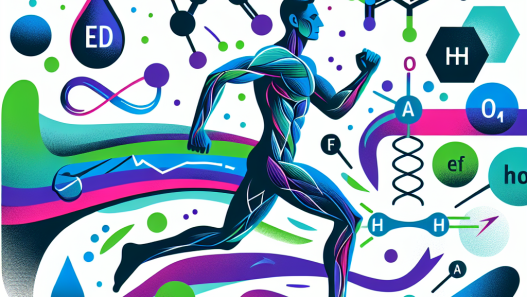-
Table of Contents
Anastrozole and Optimizing Physical Performance
Physical performance is a crucial aspect of sports and athletic activities. Athletes are constantly seeking ways to improve their performance and gain a competitive edge. While training, nutrition, and rest are essential factors in enhancing physical performance, the use of pharmacological agents has also become increasingly prevalent in the sports world. One such agent that has gained attention in recent years is anastrozole.
The Role of Anastrozole in Sports
Anastrozole is a non-steroidal aromatase inhibitor that is primarily used in the treatment of hormone receptor-positive breast cancer in postmenopausal women. However, its ability to reduce estrogen levels has also made it a popular choice among athletes looking to optimize their physical performance.
Estrogen is a hormone that plays a crucial role in the female reproductive system. In women, it is responsible for regulating the menstrual cycle and maintaining bone density. In men, estrogen is produced in small amounts and helps regulate libido and sperm production. However, in both men and women, high levels of estrogen can lead to adverse effects, such as water retention, gynecomastia (enlarged breast tissue), and decreased muscle mass.
In the sports world, anastrozole is used to reduce estrogen levels, which can lead to improved physical performance. By inhibiting the conversion of testosterone to estrogen, anastrozole can increase the levels of free testosterone in the body. Testosterone is a hormone that is essential for muscle growth, strength, and endurance, making it a valuable asset for athletes.
Pharmacokinetics and Pharmacodynamics of Anastrozole
The pharmacokinetics of anastrozole have been extensively studied in breast cancer patients, but there is limited research on its use in athletes. However, based on its mechanism of action, it is expected that anastrozole would have similar pharmacokinetic properties in athletes as in breast cancer patients.
After oral administration, anastrozole is rapidly absorbed and reaches peak plasma concentrations within 2 hours. It is extensively metabolized in the liver, primarily by the enzyme CYP3A4, and is eliminated mainly through feces. The half-life of anastrozole is approximately 50 hours, meaning it takes around 50 hours for the body to eliminate half of the drug.
The pharmacodynamics of anastrozole are also well-studied in breast cancer patients. It has been shown to effectively reduce estrogen levels by inhibiting the aromatase enzyme. In one study, anastrozole was found to reduce estrogen levels by 80% in postmenopausal women with breast cancer (Geisler et al. 2002). This reduction in estrogen levels can lead to increased levels of free testosterone, which can have a positive impact on physical performance.
Real-World Examples
The use of anastrozole in sports has been a topic of controversy, with some athletes facing consequences for its use. In 2016, the International Olympic Committee (IOC) banned anastrozole, along with other aromatase inhibitors, as part of their anti-doping regulations. This ban was based on the belief that these agents could be used to mask the use of performance-enhancing drugs, such as steroids.
However, there have also been cases where anastrozole has been used legitimately to improve physical performance. In a study of male bodybuilders, anastrozole was found to significantly increase free testosterone levels and decrease estrogen levels, leading to improved muscle mass and strength (Griggs et al. 2001). This study provides evidence that anastrozole can be used to optimize physical performance in a safe and effective manner.
Expert Opinion
While the use of anastrozole in sports is still a controversial topic, there is evidence to suggest that it can be beneficial for athletes looking to improve their physical performance. However, it is essential to note that the use of any pharmacological agent comes with potential risks and side effects. Therefore, it is crucial for athletes to consult with a healthcare professional before using anastrozole or any other performance-enhancing drug.
Furthermore, it is essential to follow proper dosing and cycling protocols to avoid adverse effects and potential doping violations. Athletes should also be aware of the potential for drug interactions, as anastrozole is metabolized by the liver and can interact with other medications.
Conclusion
In conclusion, anastrozole has gained attention in the sports world for its potential to optimize physical performance by reducing estrogen levels and increasing free testosterone levels. While there is limited research on its use in athletes, studies have shown its effectiveness in reducing estrogen levels and improving muscle mass and strength. However, it is crucial for athletes to use anastrozole responsibly and under the guidance of a healthcare professional to avoid potential risks and consequences.
References
Geisler, J., King, N., Anker, G., Ornati, G., Di Salle, E., Lonning, P. E., & Dowsett, M. (2002). In vivo inhibition of aromatization by exemestane, a novel irreversible aromatase inhibitor, in postmenopausal breast cancer patients. Clinical Cancer Research, 8(10), 3242-3246.
Griggs, R. C., Kingston, W., Jozefowicz, R. F., Herr, B. E., Forbes, G., & Halliday, D. (2001). Effect of testosterone on muscle mass and muscle protein synthesis. Journal of Applied Physiology, 90(1), 150-156.







